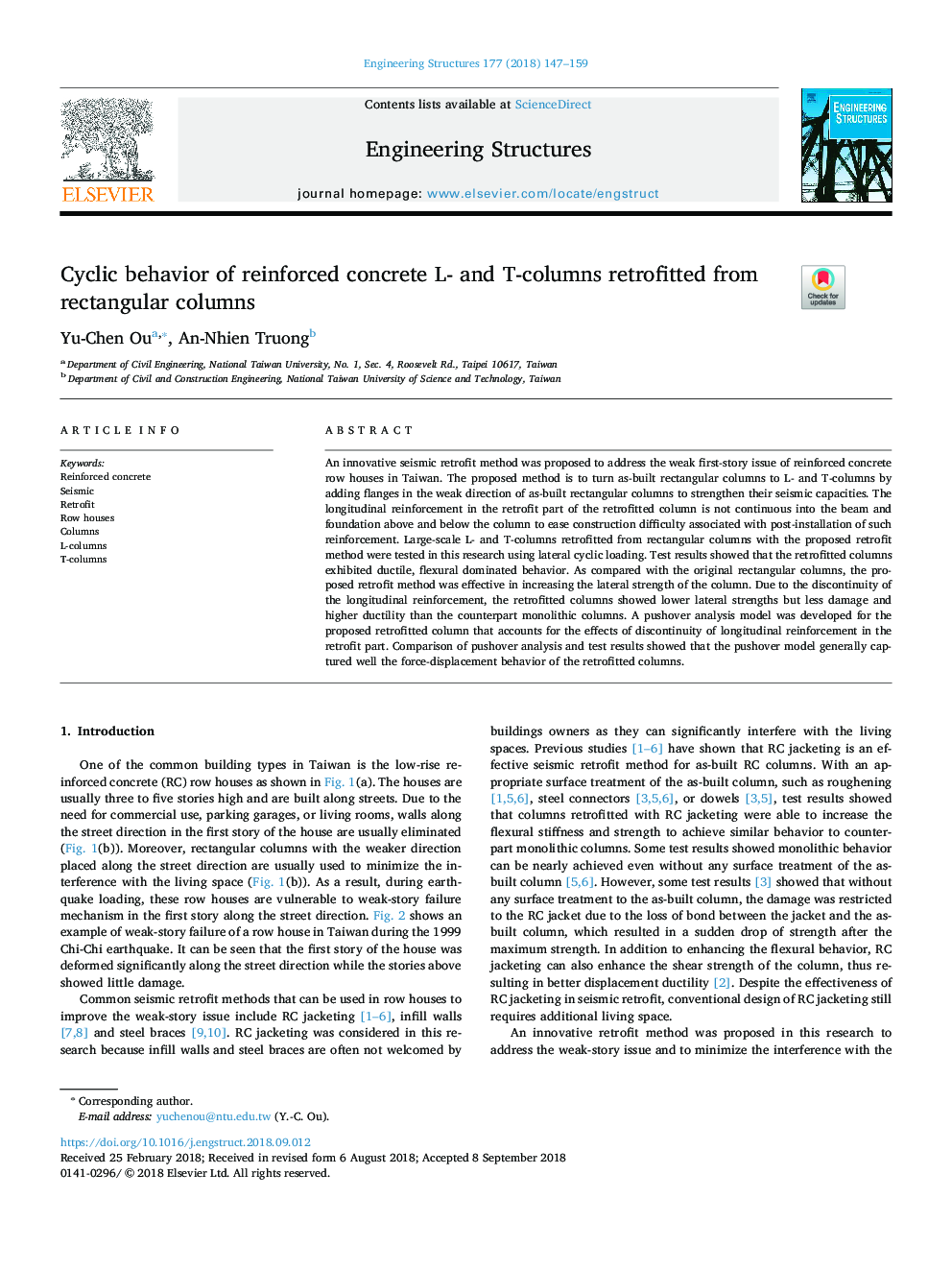| Article ID | Journal | Published Year | Pages | File Type |
|---|---|---|---|---|
| 11021317 | Engineering Structures | 2018 | 13 Pages |
Abstract
An innovative seismic retrofit method was proposed to address the weak first-story issue of reinforced concrete row houses in Taiwan. The proposed method is to turn as-built rectangular columns to L- and T-columns by adding flanges in the weak direction of as-built rectangular columns to strengthen their seismic capacities. The longitudinal reinforcement in the retrofit part of the retrofitted column is not continuous into the beam and foundation above and below the column to ease construction difficulty associated with post-installation of such reinforcement. Large-scale L- and T-columns retrofitted from rectangular columns with the proposed retrofit method were tested in this research using lateral cyclic loading. Test results showed that the retrofitted columns exhibited ductile, flexural dominated behavior. As compared with the original rectangular columns, the proposed retrofit method was effective in increasing the lateral strength of the column. Due to the discontinuity of the longitudinal reinforcement, the retrofitted columns showed lower lateral strengths but less damage and higher ductility than the counterpart monolithic columns. A pushover analysis model was developed for the proposed retrofitted column that accounts for the effects of discontinuity of longitudinal reinforcement in the retrofit part. Comparison of pushover analysis and test results showed that the pushover model generally captured well the force-displacement behavior of the retrofitted columns.
Related Topics
Physical Sciences and Engineering
Earth and Planetary Sciences
Geotechnical Engineering and Engineering Geology
Authors
Yu-Chen Ou, An-Nhien Truong,
